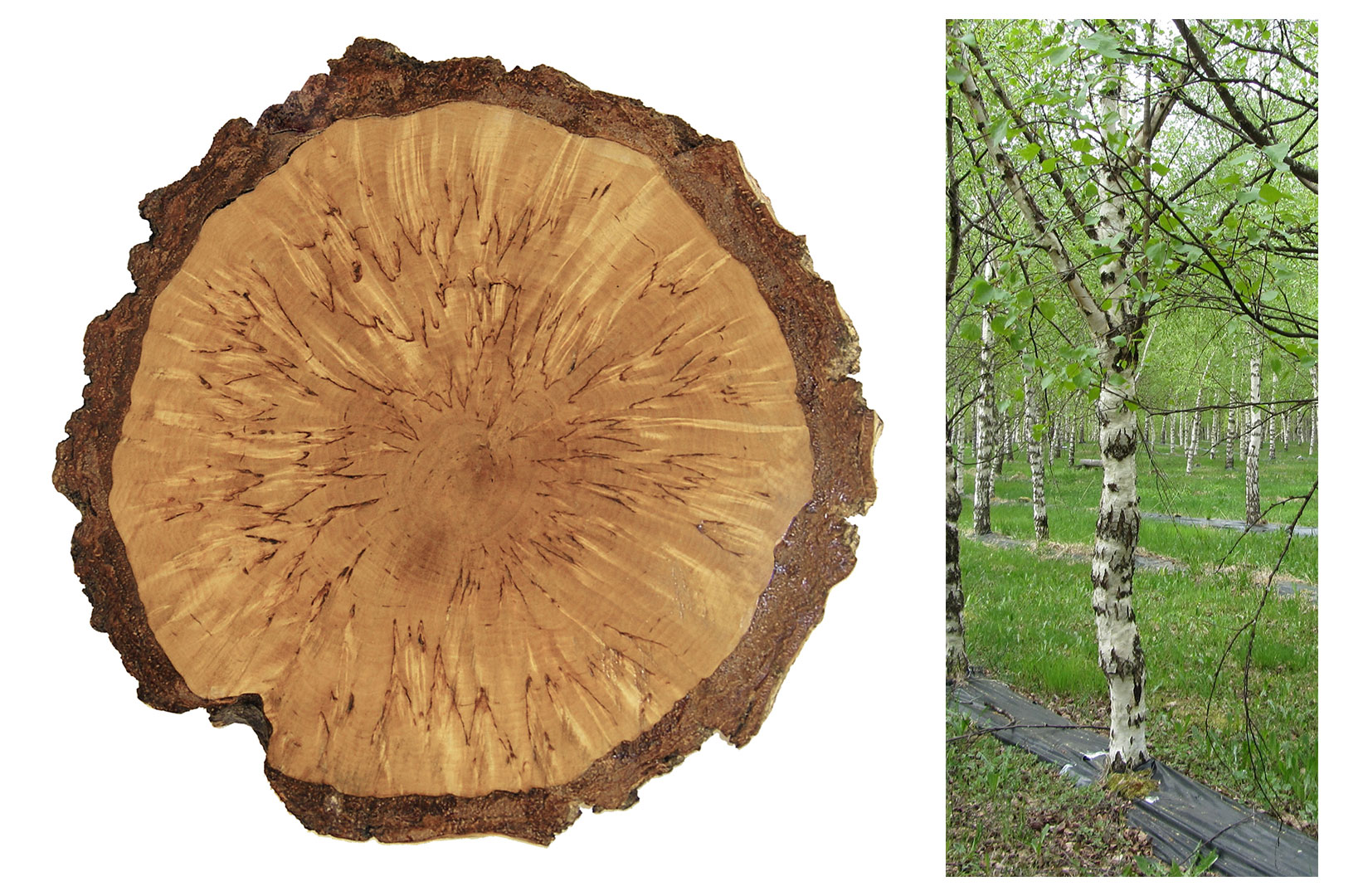Curly — or Karelian — birch is a mysterious tree with a patterned wood texture and a bizarre trunk shape. Unlike the elegant white-stemmed traditional birch, the Karelian one may seem unsightly at first glance: It is a low-growing, sinuous tree with bumps and bubbles. But the Karelian birch is famous for its wood. With its beautiful shade, patterns, and durability, the material has been used since the XVIII century in the manufacture of furniture, even for the royal chambers. For this reason, the Karelian birch was called the “royal tree” and “wooden marble”.
For more than a hundred years, there have been many debates on how the birch acquired such properties. A team of scientists from Skoltech, Saint Petersburg State Forestry University, and Forest Research Institute of the Karelian Research Centre of the Russian Academy of Sciences (FRI KarRC RAS) managed to solve the mystery of the Karelian birch and found that its wood pattern results from a mutation of one gene. The study is published in the Scientific Reports journal.
“Most likely, this is a mutation in one gene, and we know on which chromosome this gene is located. We assume that the breakdown of this locus causes the disruption of normal xylem formation — the main water-carrying tissue in the plant — and the manifestation of Karelian birch’s pattern in its appearance,” said Elena Potokina, the head of the study and a professor at the Agro Center.
What complicates the research and cultivation of Karelian birch is the problem of determining this variety. There are two ways to “recognize” a Karelian birch: either to see the pattern on the cut or to determine the features of the trunk by sight — the second method is often used by experienced foresters. Karelian birch’s signs only become visible after 8-15 years of growth. Even if getting seeds by crossing two Karelian birches, only 60% of all birches may turn out to be Karelian ten years later.
“We were lucky to cooperate with the Saint Petersburg State Forestry University and FRI KarRC RAS. We received a list of phenotypes from colleagues — about 200 trees in total — and leaves of the Karelian birch, from which we obtained DNA. The specialists of FRI KarRC RAS managed to protect two populations of offspring from crossing Karelian birches. One population was raised to the age of 16, and the other to the age of 35 years. Each tree received a professional assessment from the famous curly birch specialist Lidiia Vetchinnikova regarding which birch trees are Karelian and which are not,” continued Elena Potokina.
“We generated DNA libraries and sequenced them using GBS technology, which entails sequencing random regions of the genome. After sequencing, we received information throughout the population about those mutations (Single Nucleotide Polymorphisms) that fell into the pool of random sequences. After that, we evaluated the population structure based on these mutations and showed that the curly phenotype is evenly distributed within two populations: this means that the foresters didn’t make a mistake and that this phenotype has nothing to do with the population structure. Our study demonstrates that there are no specific subspecies of the Karelian birch in a broad sense. There is a locus in the genome that is responsible for this trait,” said Rim Gubaev, the first author of the study, a Skoltech graduate of the Life Sciences program.
The team proposed a molecular marker that can be used to identify Karelian birch in just three hours of laboratory procedures (PCR). The 10th chromosome, where the candidate gene is located, was found to have a significant amount of insertions and deletions.
“We compared this region of the genome in Karelian and European silver birch and found that the Karelian one differs in numerous deletions. Colleagues suggest that this is caused by the high activity of ‘mobile DNA elements or transposons — they move through the genome and are activated by various factors. This region is long for non-Karelian birches, and short for Karelian ones because of numerous deletions. This difference is easy to reveal with a simple PCR. Now, to determine the Karelian birch, it is sufficient to isolate DNA, conduct a PCR test with the primers that we found, and get a result within just three hours. In our sample, the test showed a 92% accuracy,” Rim Gubaev added.
“The industry receives an instrument that aids in understanding whether a tree will have a Karelian phenotype at any stage of the plant development — even on a monthly sprout — and thus in choosing a sprout for the plantation. We offer a powerful tool to establish and manage Karelian birch tree plantations for industrial production,” concluded Elena Potokina. The researchers are optimistic that this method will also enable the protection of this valuable and rare red-book variety of birch from being illegally logged in its natural habitat.
The study is supported by the Russian Science Foundation’s grant no. 22-16-00096 titled “Identification of genetic factors of curly birch ‘wood patterning’ using high-performance genotyping.”
Contact information:
Skoltech Communications
+7 (495) 280 14 81

